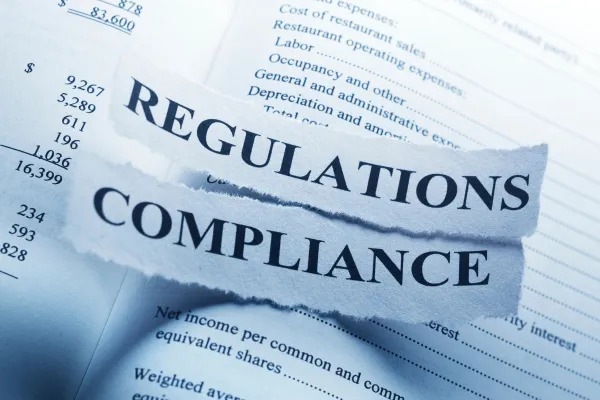Navigating the world of government regulations can be a challenging endeavor for businesses of all sizes. Every industry is subject to laws, policies, and administrative requirements that impact operations, innovation, and growth. Business regulatory advocacy is the tool companies and business groups use to influence these regulations, ensuring that policies are fair, transparent, and supportive of economic progress.
But advocacy isn’t just about making noise—it’s about strategic influence, presenting well-researched arguments, and engaging with policymakers effectively.
What is Business Regulatory Advocacy?
Business regulatory advocacy is all about influencing government policies, laws, and regulations that impact businesses. It’s a way for companies and business groups to push for better policies, ensuring that regulations support rather than hinder growth.
The Core Purpose of Advocacy
At its heart, advocacy seeks to create a fair business environment. It addresses unnecessary bureaucratic obstacles and aims to improve business policies that promote economic growth and innovation.
Advocacy vs. Lobbying: What’s the Difference?
Many people confuse advocacy with lobbying, but they are not the same. Lobbying usually involves large corporations pushing for policies that benefit them directly. Advocacy, on the other hand, represents broader business interests, including small and medium enterprises (SMEs), ensuring that regulations promote overall business development rather than favoring a select few.
The Importance of Business Advocacy in Regulatory Affairs
How Regulations Impact Businesses
Regulations are essential for maintaining order, but excessive or outdated policies can stifle growth. Advocacy helps businesses challenge unfair regulations, streamline administrative processes, and promote economic prosperity.
The Role of Business Representative Organizations
Organizations like chambers of commerce and industry associations play a crucial role in advocacy. They represent businesses collectively, ensuring that the voices of entrepreneurs and business owners are heard at the policymaking table.
Key Challenges in Business Regulatory Advocacy
Navigating Bureaucratic Red Tape
Government policies often involve lengthy procedures, making it difficult for businesses to operate smoothly. Advocacy efforts focus on cutting unnecessary red tape and streamlining regulations.
Overcoming Political Resistance
Governments are sometimes reluctant to change policies, especially if they have been in place for years. Advocacy requires strategic persuasion, backed by data and industry support, to encourage policy shifts.
Ensuring Fair Representation for All Businesses
Large corporations often have more resources to influence policymakers, leaving smaller businesses unheard of. Advocacy works to ensure that businesses of all sizes have an equal say in regulatory discussions.
Steps to an Effective Advocacy Agenda
Step 1: Identifying Key Issues
Advocacy begins with identifying the most pressing regulatory issues affecting businesses. These could range from tax policies to trade restrictions.
Step 2: Understanding the Impact of Regulations
Once key issues are identified, businesses must analyze how these regulations impact operations, competitiveness, and economic growth.
Step 3: Proposing Viable Solutions
Advocacy isn’t just about highlighting problems—it’s about offering practical solutions. These solutions should be data-driven, realistic, and beneficial to both businesses and the broader economy.
Crafting a Powerful Advocacy Strategy
Step 1: Defining Clear Goals and Objectives
Every advocacy effort should start with a well-defined goal. What specific regulatory change does the business community want?
Step 2: Identifying Target Audiences
Understanding who holds decision-making power is crucial. This could include politicians, regulatory agencies, or public policymakers.
Step 3: Designing Persuasive Advocacy Campaigns
Campaigns should be structured to educate policymakers, build public support, and present a compelling case for change.
Step 4: Allocating Resources and Managing Efforts
Effective advocacy requires financial, human, and organizational resources. Allocating these strategically ensures sustained efforts.
Step 5: Monitoring and Evaluating Progress
Advocacy is an ongoing process. Measuring success and adjusting strategies accordingly helps in achieving long-term goals.
Advocacy Methods: What Works Best?
Public Awareness Campaigns
Educating the public about business regulations and their economic impact can create pressure for policy changes.
Building Strong Government Relations
Regular engagement with policymakers helps businesses stay ahead of regulatory changes and influence them proactively.
Engaging in Industry Coalitions
Collaborating with other businesses amplifies advocacy efforts, making it more likely to achieve regulatory improvements.
Data-Driven Advocacy: Using Research and Reports
Facts and figures strengthen advocacy arguments, making it easier to convince regulators of the need for change.
Best Practices for Successful Business Advocacy
Building Trust and Credibility
Policymakers are more likely to listen to credible business advocates who present well-researched, balanced proposals.
Engaging Stakeholders for Collective Impact
Involving multiple stakeholders, including consumers, workers, and business owners, creates a stronger advocacy movement.
Adapting Strategies to Cultural and Political Contexts
Every country has different political norms. Advocacy strategies should be tailored to fit the local regulatory landscape.
Conclusion: Making Advocacy Work for Business Growth
Business regulatory advocacy is a powerful tool for shaping policies that foster growth and innovation. By following strategic advocacy practices, businesses can drive regulatory improvements that benefit the entire economy. Whether you’re an entrepreneur, a business association leader, or a policymaker, understanding how to effectively advocate for regulatory improvements is crucial for creating a thriving business environment.
FAQs on Business Regulatory Advocacy
1. What is the primary goal of business regulatory advocacy?
Business advocacy aims to influence policies and regulations to create a fairer, more competitive business environment.
2. How can small businesses engage in advocacy?
They can join industry associations, participate in public consultations, and collaborate with other businesses to strengthen their voice.
3. How does advocacy differ from lobbying?
Advocacy represents broader business interests, while lobbying is often focused on specific corporate gains.
4. What challenges do businesses face in regulatory advocacy?
Common challenges include bureaucratic red tape, political resistance, and resource limitations.
5. What are the most effective advocacy strategies?
The best strategies include public awareness campaigns, data-driven proposals, coalition-building, and direct engagement with policymakers.




